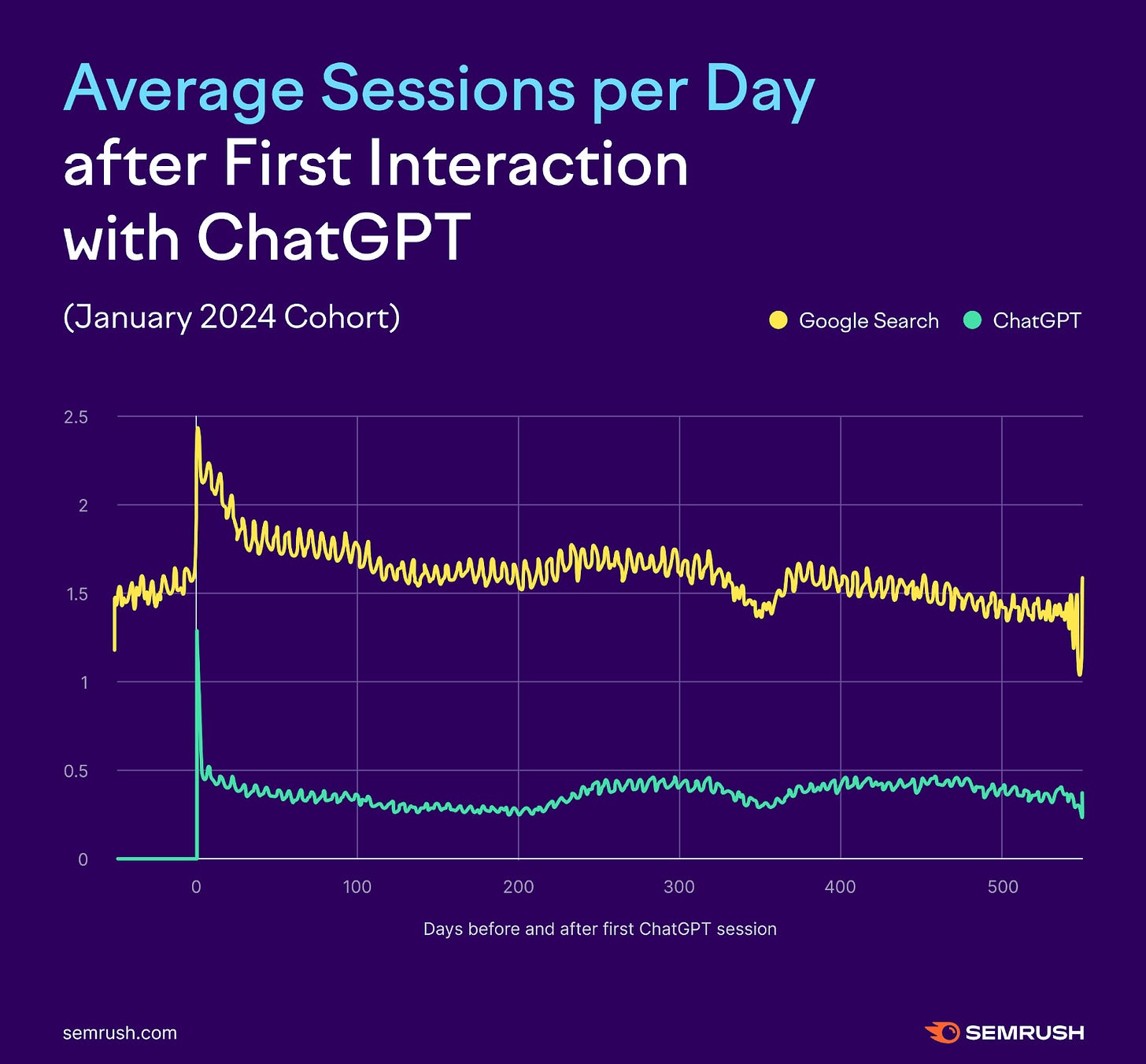Growth Intelligence Brief #7
ChatGPT doesn't cut into Google usage, does Pay-per-crawl work?, AI still not as good as humans at generating content
Welcome to another Growth Intelligence Brief, where organic growth leaders discover what matters - getting insights into the bigger picture and guidance on how to stay ahead of the competition.
As a free subscriber, you’re getting the first big story. Premium subscribers get the whole brief.
Today’s Growth Intelligence Brief went out to 442 marketing leaders (+5 since the last issue).
This week, we’re tracking 3 major signals shaping the future of search and content economics:
ChatGPT adoption doesn’t reduce Google usage - Semrush data shows the pie is expanding.
Publishers are testing “pay-per-crawl” models to monetize AI access.
Fresh data reveals AI-generated content still underperforms in Google rankings.
My SEO landscape check shows big shifts over the last 2 weeks.
I’ll also connect the dots on what this all means for demand vs. supply in content, and why humans—not machines—still hold the keys to differentiation.
Is ChatGPT cutting into Google’s market share?
Semrush analyzed 260 billion rows of clickstream data from January 2024 to June 2025 to see how Google Search behaviour changed after people first used ChatGPT.
Here’s what happened:
The study compared several cohorts of US desktop users who began using ChatGPT at a certain point in time with a control group that never used ChatGPT.
It found no decrease in Google search usage. Sessions on Google held steady or slightly increased after ChatGPT adoption. This pattern held for new and long‑term ChatGPT users and for the control group.
Why this news matters:
The data supports the “expansion hypothesis:” Generative AI doesn’t cannibalize search - it leads to new, generative behaviour.
People perform tasks like creating images, spreadsheets, and insights. Marketers feared that ChatGPT would erode Google’s dominance; instead, the two channels coexist.
My take on this:
On the macro level, ChatGPT isn’t replacing Search.
On the micro level, it’s absolutely possible that some of your customers are using ChatGPT for things that they previously used Google for.
And, don’t forget, with AI Mode, Google is looking a lot more like ChatGPT. So, they are becoming increasingly similar.
At the end of the day, what matters is action. And right now, a lot of things you do for Google are also good for ChatGPT.
However, don’t confuse tactics with outcomes. You still need to monitor your presence in LLMs and adjust (content, web footprint, technical stuff) accordingly.
What excites me the most about the results of this study is that the pie is growing - not shrinking. If ChatGPT usage bypasses the use of classic Google Search, it means we have more surface area to potentially be visible and influential.
Here’s what to do:
Continue investing in SEO. Google remains a core channel.
Add AI‑SEO efforts like optimizing for AI answers and Perplexity rankings to complement (not replace) traditional SEO.
Monitor how your audience uses generative AI and adjust channel mix accordingly. Tools like Sparktoro help!
Begin collecting richer customer data and use GPT‑5 for workflow automation and ideation while maintaining human editorial control.



